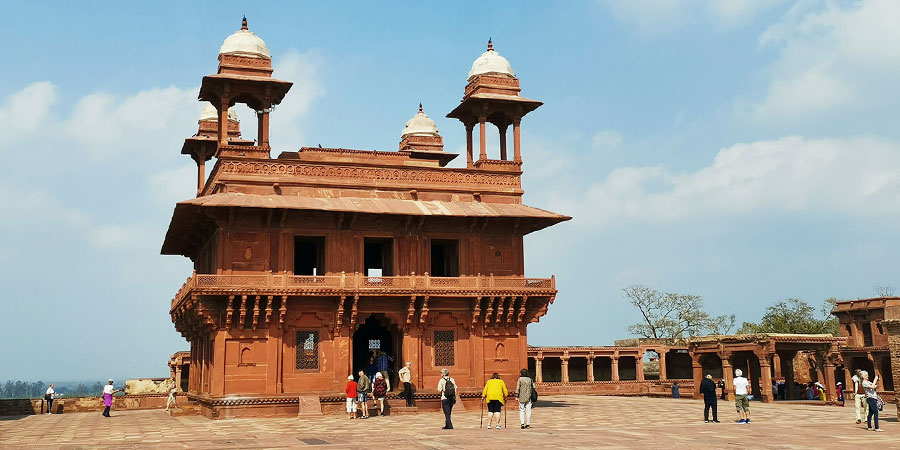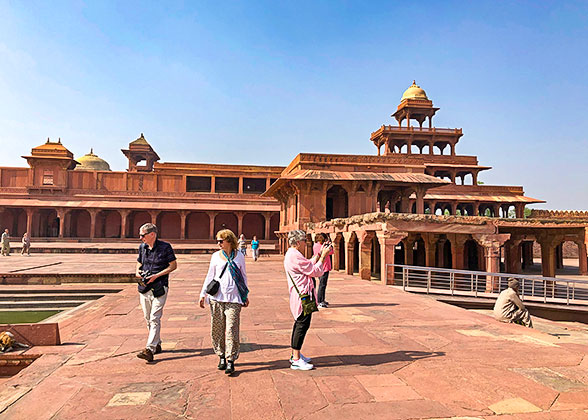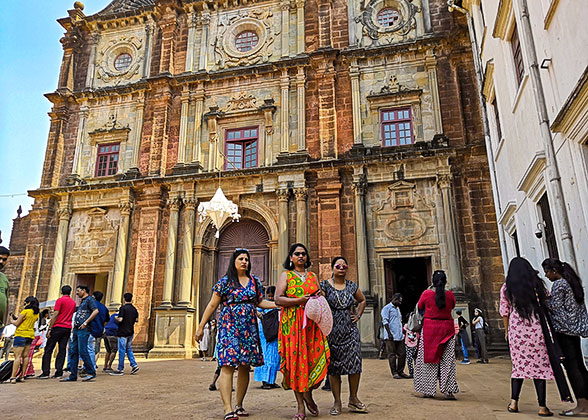Fatehpur Sikri - 5 Reasons to Enjoy a Day in Fatehpur Sikri
The place is known for its architecture and historical value. If you are a traveler who is pretty interested in the Mughal Empire, you must visit this place. Emperor Akbar was known for his ability to acknowledge the different facets of Indian culture. But what will you do there and how one can enjoy a one day trip from Agra to Fatehpur Sikri? Let’s find out as we present 5 reasons to enjoy a day in Fatehpur Sikri.1. Historical Significance
Fatehpur Sikri was the capital city established by the emperor Akbar during the reign of the Mughal Empire. The city was abandoned by its inhabitants after 15 years due to the water supply shortage. Quite an unfortunate way to end the city’s operations. Fatehpur Sikri was formerly called Fatahabad which is a Persian word that translates as a victory.
Victory indeed a word which is apt for the great Akbar. The city has an interesting story to it. It was built to honor the saint Salim Chishti. The entire palace is built around the Sufi saint’s tomb. In fact, Akbar had gone to Salim Chishti to get blessings so that Akbar gets a son to ascend his throne. Akbar did have three sons after he took the blessings. Akbar named his first son as Salim as a mark of respect to the holy saint.

|
2. Religious Tolerance
Yes in times, when we are divided by so many religions, can you imagine 500 years ago Akbar was one of the most religious tolerant emperors of all time? Buland Darwaza was one fine example of the same. The magnificent gate is the literal translation, it is indeed a magnificent structure made from red sandstone. It was constructed to commemorate the victory over Gujarat but what this place teaches you is not just celebrating victory but showing tolerance towards other religions.
The main gateway consists of an inscription written in the Persian language which reads ‘Jesus, the son of Mary said, “the world is a bridge, pass over it but build no houses upon it, he hopes for a day, hopes for an eternity but the world endures but an hour, spend it in prayer for the rest is unseen.” It clearly shows Akbar believed in one religion called humanity.
3. Love Beyond Religions

Fatehpur Sikri, Agra
|
The palace is a mixture of Hindu Rajputana style and Islamic Mughal style. Akbar would have faced many objections by his own kith and kin but he stood his ground for the immense love he had for Jodha Bai. In fact, the queen Jodha Bai was allowed to follow her tradition within the palace. The palace is also known Mariam-uz-Zamani. This is one of the places which a good example of the life the Akbar and Jodha Bai lived decades ago.
4. Respect for Teachers
Sheik Salim Chishti, a Sufi saint who lived and died in the time of Emperor Akbar is considered to be a significant religious figure. The story is that Akbar had three sons because of the blessing given by the holy saint. Akbar, as an emperor, had given the highest respect to the religious leaders of his times.
The tomb of Sheik Salim Chishti is one of the significant places to see near Agra and it is considered to be the greatest architectural achievement of Mughals apart from the famed Taj Mahal. The tomb is slightly raised from the ground about 1 meter. You have to climb five steps to reach the portico. The raise from the ground shows the reverence of Akbar towards the holy saint.
The tomb is made of marble which gives a pure feeling to heart and mind. The devotees who visit the tomb seek blessings from the saint for childbirth. Another important aspect is the Sufi singers who are present outside the tomb. Religious significance cannot be described through words. The ‘jaali’ frames are a fine example of stone latticework which is intricately designed for people to view the quadrangle of Jama Masjid.
5. Music and Dance
Music was a significant part of the Mughal Empire, and in particular to Akbar’s reign. Akbar, being a music lover, had great musicians like Tansen of Gwalior and Baz Bahadur of Malwa. A musical genre called Dhrupad was practiced in the court of Akbar which is Hindustani music.
It was practiced largely during the 15th to 18th centuries. The golden period of kathak came into existence during Akbar's reign. The music of those times was shared orally not through written materials. Tawaifs were the female dancers of the Mughal era they excelled in music, dance, and theatre.
|
|
The musical instrument which defined the Mughal period was Rudra veena which is majestic and calming in the sound at the same time. Now, where did all these happen? It all happened in the Panch Mahal which is a pyramidal structure supported by 176 columns. It is made of sandstones. There is a pool in front which is known as ‘Anoop Talav’. Panch Mahal is also known as ‘Badgir’ which translates into a wind catcher tower.
The distance between Agra and Fatehpur Sikri is 40 kilometers (25 miles). Many tour operators in Agra provide customized tour plans, however, if you wish to explore the place on your own, there are buses and cabs available from Agra. The best time to visit Fatehpur Sikri is morning till evening. Since there are fewer places to stay, it’s best to return to Agra after sightseeing.




